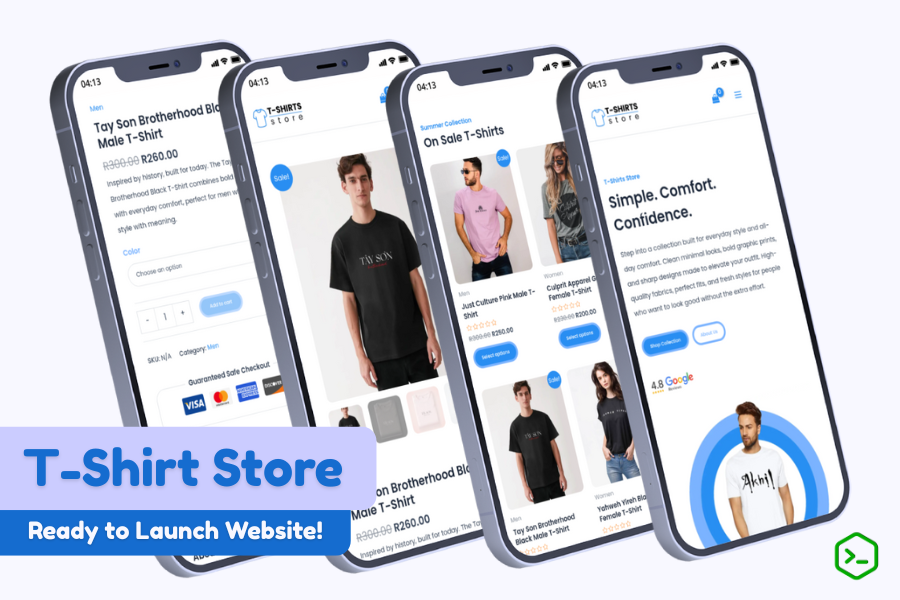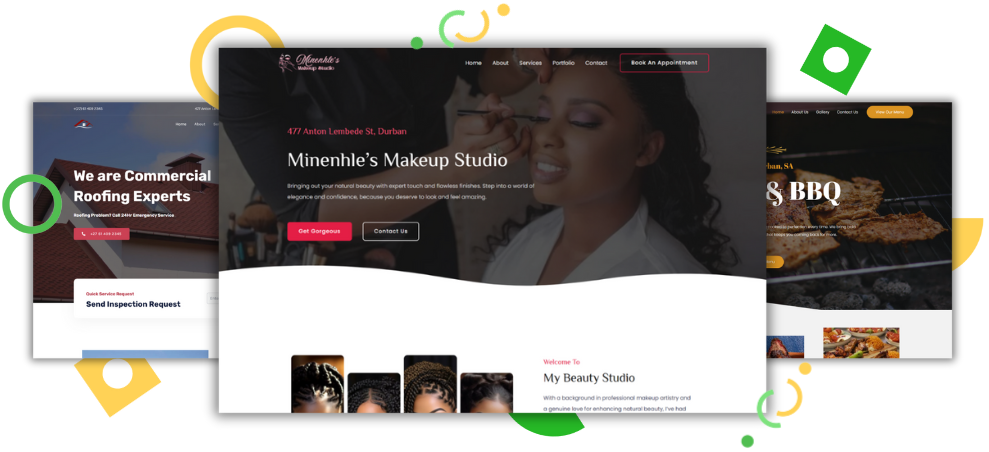Trust is the foundation of every successful online business. People don’t walk into your store, look you in the eye, or physically hold your product. All they have is your website. That means your website must do the job of building trust within seconds, or risk losing the visitor forever.
If your site feels suspicious, hard to use, or just “off,” potential customers won’t stick around. Even if you have great products and competitive prices, it won’t matter unless people believe your store is reliable and safe.
In this article, we’ll dive deep into why people don’t trust your website and most importantly, how you can fix it. These aren’t vague tips, they’re based on real user behavior, digital marketing experience, and practical solutions that can help boost your credibility and sales.
What makes a website look untrustworthy to visitors?
When someone lands on your website for the first time, they don’t have the full story. They don’t know who you are, where you’re based, or if your business is real. All they can judge is what’s on the screen in front of them.
Let’s look at the most common reasons people don’t trust a website, along with detailed solutions for each.
1. Your website design looks outdated or unprofessional
Your website design is your first impression. Just like in real life, that first glance can make or break the interaction. If your website looks like it was built in 2002, with clunky menus, neon colors, or crowded layouts, people immediately assume that your business is behind the times and that includes your customer service, payment security, and product quality.
Think of how you’d feel walking into a physical store with broken lights, dusty shelves, and no signs. You’d probably leave without buying anything. Online, it’s no different.
What customers expect:
- Clean design with a clear structure
- Consistent color scheme
- Easy-to-read fonts
- Professional-looking images and banners
- White space that makes the content feel breathable
What you should do:
- Invest in a modern, responsive theme
- Avoid using too many colors or fonts
- Make sure all design elements align (icons, buttons, headings)
- Don’t overcrowd the homepage, keep it minimal and purposeful
Even if you’re on a low budget, there are free or low-cost themes available that can help your site look more credible. A polished look tells visitors that you care, and that goes a long way toward building trust.
2. You don’t use a secure HTTPS connection
Imagine entering your credit card on a website and seeing a “Not Secure” warning in the browser bar. That alone can scare someone away, no matter how nice your products look.
When your site uses HTTPS, it encrypts the connection between the browser and your website. This protects customer information like passwords, payment details, and personal data from being intercepted by hackers.
Why this matters:
- Visitors today expect every website to have a secure connection
- Google penalizes non-HTTPS sites in search results
- Some browsers block non-HTTPS forms completely
- People are more likely to abandon checkout if there’s no lock icon
How to fix it:
- Get an SSL certificate from your hosting provider (many offer it free)
- Install it and force all traffic to redirect from HTTP to HTTPS
- Use tools like SSL Checker to make sure everything’s set up properly
It’s a simple fix, often done in minutes, but it can instantly make your website feel more professional and trustworthy.
3. Your site has too many ads or popups
Ads aren’t always bad. But if your site is filled with flashing banners, intrusive popups, or auto-play videos, it becomes overwhelming and annoying. It looks like you’re more focused on making ad money than helping your customers.
In fact, too many popups can trigger the same reaction people have to scammy websites, confusion and doubt.
Red flags for users:
- Popups appear before the page even loads
- Multiple popups stack on top of each other
- Hard-to-close windows or clickbait ads
- Content covered by banners
What to do instead:
- Limit popups to one or two, and use them wisely (e.g., exit intent)
- Avoid popups on mobile unless absolutely necessary
- Use minimal and relevant ads only if your site depends on ad revenue
- Always give the visitor control, easy exit, no tricks
Your goal should be to create a smooth, helpful experience. Popups should support your message (like collecting emails or offering discounts), not disrupt it.
4. There’s no About Us or Contact page
One of the quickest ways to lose trust is to stay anonymous. If visitors can’t find any real information about who runs the site, where the business is located, or how to contact you, they’ll assume the worst — that you might not be real at all.
Customers often ask:
- Who is this business?
- Can I reach someone if there’s a problem?
- Are they based in my country?
- Are they hiding behind a fake name?
How to fix this:
- Write a genuine “About Us” page with a short story about your brand
- Include your name or your team’s name and photos if possible
- Provide multiple contact methods: email, phone, contact form, social media
- List your business address (even a PO Box or city)
Being transparent makes you human, and that instantly builds trust.
5. Your content has spelling and grammar errors
Visitors notice when your text is filled with errors. It may seem minor, but spelling mistakes, awkward phrasing, and poor grammar make your website feel rushed or lazy.
This sends the message: “If they didn’t even proofread this, what else did they skip?”
What users feel:
- Doubt about your professionalism
- Concern over product descriptions
- Less confidence during checkout
What you can do:
- Use free tools like Grammarly to scan for errors
- Read your content out loud to catch weird phrasing
- Ask someone else to review important pages (product descriptions, homepage, checkout)
Clear, error-free writing doesn’t just improve trust, it helps with SEO too. Google favors well-written, easy-to-understand content.
6. You don’t have clear return and refund policies
One of the biggest fears online shoppers have is getting stuck with a bad product and no way to return it. If your website doesn’t clearly explain what happens when something goes wrong, customers will hesitate to buy.
What people look for:
- How many days do I have to return the product?
- Will I get a full refund?
- Who pays for return shipping?
- How do I start a return?
What you should include:
- A dedicated Return & Refund Policy page, easy to find in your footer
- Simple language explaining your policy
- Contact info or form for starting a return
- Timeframes and conditions clearly stated
Even if your policy is strict, it’s better to be honest and clear than to leave people in the dark.
7. You don’t have real customer reviews
Reviews are one of the most powerful forms of social proof. When people see that others have bought and liked a product, they feel more confident doing the same.
On the flip side, a website with no reviews feels risky. And fake reviews, with generic names or identical wording, are worse than none at all.
What to do:
- Display real reviews on product pages
- Use tools like Judge.me, Loox, or Yotpo to collect them
- Include star ratings and customer photos when possible
- Highlight a few top reviews on your homepage or landing pages
If you’re just starting out, ask your first buyers for honest feedback. A few genuine reviews are more powerful than 100 fake ones.
8. Your product photos look poor or inconsistent
Product images are often the only thing a customer has to judge your product. If your photos are blurry, too small, poorly lit, or inconsistent in style, it reflects badly on your brand.
How bad photos hurt trust:
- Makes the product look cheap
- Feels like a scam (especially if it’s a stock photo with no details)
- Customers can’t visualize the item clearly
How to improve:
- Use a high-quality camera or phone with good lighting
- Show multiple angles and zoomed-in details
- Keep the same background or setting for all photos
- Add lifestyle shots showing the product in use
Great product photos make your website feel professional and reliable, and they directly boost conversions.
9. Your site is slow or doesn’t work well on mobile
Speed matters. People are impatient. A slow website causes frustration and makes your business feel unreliable.
And with over 60% of online traffic coming from mobile devices, if your site doesn’t look or work well on a phone, you’re losing a huge chunk of potential buyers.
What slows down trust:
- Pages taking more than 3 seconds to load
- Menus that don’t work on mobile
- Text too small to read
- Buttons too hard to tap
Fix this by:
- Using a mobile-responsive theme
- Compressing images before uploading
- Minimizing scripts and plugins
- Hosting on a fast server or using a CDN
Fast + smooth + mobile-friendly = trustworthy in the eyes of your visitors.
10. Your checkout process is confusing or long
Even if your website looks great, a complicated or shady checkout page can destroy trust at the last second.
If the payment page feels unfamiliar, takes too long, or asks for too much information, people start wondering: “Is this safe? Is this a scam?”
Best practices:
- Use well-known payment gateways (like PayPal, Stripe, Apple Pay)
- Keep the checkout to 2-3 quick steps
- Allow guest checkout (don’t force account creation)
- Show a summary of charges before asking for payment
- Add trust icons (lock symbols, money-back guarantee, SSL badge)
The smoother and more transparent your checkout process is, the more confident people will feel completing their purchase.
How can you make your website instantly more trustworthy?
Building trust doesn’t take a huge budget or a fancy design team. It starts with simple, thoughtful changes that show visitors your website is safe, professional, and run by real people. Here’s how you can do that right now:
1. Show the real people behind the brand
People trust people, not logos. Let visitors know there’s a human behind the business. Add a photo of yourself or your team. Share your name, your story, and why you started your business. A friendly message from the founder can go a long way in making your brand feel genuine.
2. Use trust badges and clear guarantees
Badges like “Secure Checkout,” “30-Day Returns,” or “Money-Back Guarantee” can instantly ease doubts. They’re visual cues that say: “You’re safe here.” If you use PayPal, Stripe, SSL, or verified security providers, show their logos. It’s a simple way to earn trust with a single glance.
3. Make your policies visible
If someone has to hunt for your return policy, they’ll assume you don’t have one. Always include clear links in the footer to your Privacy Policy, Return/Refund Policy, Terms and Conditions, and Shipping Info. This shows you’re organized and transparent, two things customers always look for.
4. Add live chat or easy support options
When people know they can get help fast, they feel safer. Even if you don’t have a team, you can use live chat tools or even automated chatbots. Include a visible “Contact Us” page with an email address, phone number, or links to your social media.
5. Use customer photos or videos (UGC)
If past buyers are happy, let future buyers see it. Displaying real photos or videos from your customers adds social proof and credibility. It proves your products are real and so are the people who love them.
6. Get an SSL certificate (HTTPS)
If your site doesn’t have that little padlock in the browser bar, you’re losing trust and hurting your Google ranking. Most hosting providers offer free SSL. If your URL starts with “http” instead of “https” — fix that today. It’s one of the fastest ways to boost trust.
7. Look clean, modern, and consistent
Your website design doesn’t have to be flashy, but it should look professional. Use matching fonts, colors, and spacing. Avoid clutter, outdated layouts, or broken links. A neat design sends the message: “We care about quality, and your experience here.”
What do customers look for before buying from a new website?
When someone visits your website for the first time, they’re usually looking for a few key things before they buy:
- Customer reviews: Especially with pictures
- Delivery details: How long will it take? Is it free?
- Return policy: What happens if it doesn’t fit or arrives damaged?
- Contact info: Can they reach someone if there’s a problem?
- Secure payment options: Like PayPal, credit card, or trusted processors
- A clean, easy-to-use layout: If it’s confusing, they leave
If they don’t find these answers within a few seconds, their trust level drops, and chances are… they’ll leave without buying.
How can small businesses compete with big trusted brands?
You don’t need to be Amazon to win sales. You just need to connect with people in a way big brands can’t. Big stores are convenient, but they’re not personal. That’s where you have an advantage.
Here’s how you can stand out:
- Be human: Share your story, your mission, and why you care.
- Be helpful: Respond to questions quickly and kindly.
- Be focused: Offer specific products for a specific audience, not everything for everyone.
- Be secure: Offer simple, safe checkout with clear information at every step.
Customers are more likely to buy from a small brand that feels honest, personal, and easy to use than a giant one that feels cold or complicated.
Final Thoughts: How to Build Trust and Keep Customers Coming Back
Building trust isn’t a one-time task. It’s something you work on continuously, by updating your content, improving your design, being honest, and offering amazing service.
When people trust your website, they don’t just buy, they come back, tell others, and become loyal fans. Trust is what turns visitors into buyers. And buyers into repeat customers.
FAQ: Most Asked Questions About Website Trust
-
How do I know if customers don’t trust my website?
Look for signs like high bounce rates, low conversion rates, abandoned carts, or short session times. Use tools like Google Analytics or Hotjar to track visitor behavior.
-
What are trust badges and do they work?
Trust badges are small icons that show your site is secure or verified (like Norton, PayPal, or SSL). They help reduce fear and increase conversions.
-
How important are product reviews for trust?
Very important. Over 90% of people read reviews before buying. Without them, people feel unsure and may not trust your product quality.
-
Can I build trust without showing my face?
Yes, but it’s harder. You’ll need strong branding, good content, solid customer service, and visible contact info to build credibility.
-
How fast should my website load to be trustworthy?
Under 3 seconds. Fast-loading websites are seen as more professional and reliable. Use tools like GTmetrix or PageSpeed Insights to test your site.
-
Do customers really care about refund policies?
Yes! A clear refund policy gives people confidence to buy. It shows that you stand by your products and care about their satisfaction.
-
How can I add real customer reviews if I’m just starting out?
Ask your first customers directly. Offer a small discount in exchange for feedback. You can also use reviews from social media if available.
-
Is HTTPS really that important for trust?
Absolutely. Most browsers now warn users if a site isn’t secure. HTTPS is also a ranking factor in Google search.
-
What’s the quickest way to build trust today?
Add a professional logo, fix your mobile layout, use clear images, and write a great About Us page. These small changes build instant credibility.






